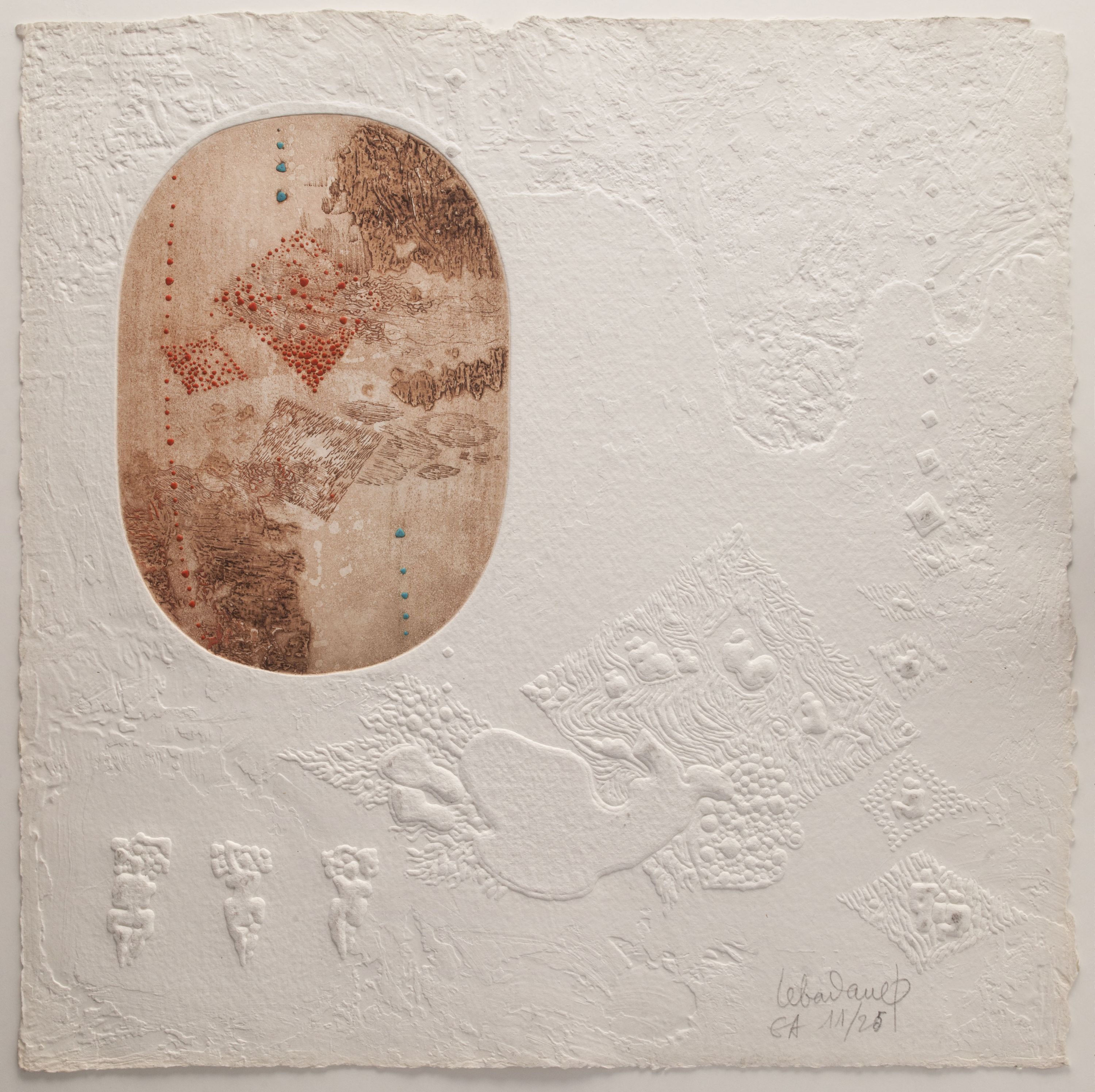
Space K
Gravure au carborundum
Estampe originale
Don manuel : Lebadang, Myshu
M.C. 2015-50
In the years 1985 - 1987, Lebadang created his first Spaces. The first were all white, using a very thick, pure cotton paper developed and made specially for the artist. He modelled the cellulose like paper architecture, as if it were the surface of an imaginary planet seen from above, with its valleys and mountains. The artist-as-creator conjured up a pure, spiritual landscape reconstructed from his intuition of a primordial nature that is invisible, yet present. There is an echo of Daoism in this quest presented to the viewer, who is encouraged to look beyond the confines of the work.
This Espace (Space) seen from the sky confers a giganticism upon the viewer and dispenses with a frame. Small, circumscribed silhouettes often appear. These encircled humans form the nucleus of the Far Eastern conception of the human order: the family, the village and society as a whole. These human cells, emanations of the artist’s seal, draw the viewer's gaze as they show the tiny scale of man in this limitless landscape.
Lebadang’s Espaces (Spaces) are at once empty and inhabited. Through them, he expresses his Buddhist sensibility: the Buddha is devoid of ego but represents plenitude itself. Figures of seated Buddhas, recognisable by the high protuberance on the head, appear here and there over the paper’s surface.
Soon Lebadang began to produce his Espaces in black paper, presented as pendants illustrating the complementarity of day and night. The effects of texture and shadow on the soft, creamy background evolve from hour to hour depending on the light, fostering a relationship with the work that is as active and mobile as it is patient and contemplative.